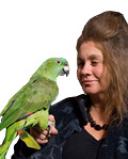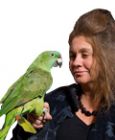
His pleasure in these rituals reflected something more than appreciation for a good meal or an overly tidy personality. Similar to many, Billy's tastes hark back to childhood. Motions acquired in youth recall in adulthood an essence of self that often gets buried under life's travails. Daily routines that were taken for granted in the salad days provide comfort in difficult times.
Perhaps Billy's rituals connected those parts of himself that had been torn asunder during years of internment. There, imprisoned and alone, days were filled with the screams of fellow prisoners and the stench of suffering. After release, Billy once again felt the sun's warmth, smelled summer grass, and watched fireflies light the night. Behind the kind face, Billy was a complex man, a conflicted man. A man, one might say, without a country.
By reconciling the nature versus nurture debate, neuropsychology has provided both a service and a disservice. On one hand, it has achieved conceptual consilience by showing that "who we are" derives from synergistic interactions between inheritance and experience. Subsequently, we no longer have to fret about whether genes or environment has more influence on personality, temperament, and behavior. Instead, how we feel, think, and act evolve like the preparation of fine food, with ingredients interacting in a way that their individual contributions can no longer be detected.
On the other hand, this conceptual consilience has messed up what seemed to be a nice neat way of packaging the world. Categories just don't seem to fit anymore. Biological and social conventions encountered perhaps their most formidable challenge when Joan Roughgarden showed that rigid, binary notions about sexuality and gender fail to capture nature's rainbow of diversity. [1] Protandrous damselfish and protogynous wrasses change from being male and female as fluidly as they swim through the water, and they are but two examples from the animal kingdom. Now, species categorizations seem to be following a similar deconstructive track.
Billy, our "man without a country", was cross-fostered, a genetic chimpanzee nurtured by humans. [2] He spent his first fifteen years much like other human boys of the likes found in Hollywood's "Leave It to Beaver": eating ice cream, driving in the car, and going fishing on weekends. Of course there were differences. Billy was made to work with his "dad" by entertaining at parties-plus he wore a collar and spent nights sleeping in a cage. Yet, on the surface, the lives of Billy and Wally Cleaver looked very similar.
Life changed drastically for Billy when he was sold to a biomedical laboratory. He spent fourteen years, in a 5'x5'x7' suspended metal cage, underwent more than 289 "knockdowns" (anaesthetizations), 50-plus liver, bone marrow, and lymph node biopsies, and was used in hepatitis B, measles, polio, tetanus and HIV vaccine studies. When finally rescued to live in sanctuary, life changed hugely again, this time for the better. Sanctuary still entails confinement, yet Billy was free to roam on the sanctuary islands, watch the sun set, and choose from an array of nutritious foods that delighted the palate.
Billy's recovery in sanctuary and the fundamental work of repairing the self did not proceed smoothly.[3] It was difficult both because of the horrendous trauma he experienced and because of the relational complexities introduced during his development. Billy did not possess what traumatologists consider crucial for recovery: an ability to socialize and form deep bonds with a community. Why not? The reason derives from the turbulence created at the interface between nature and nurture.
Unlike Tom, another sanctuary resident who was wild-born and reared by his biological mother in a free-ranging chimpanzee community, [4] Billy's self had been cultivated by human thoughts, emotions, and values. His upbringing was reflected in his choice of friends, food preferences, and other characteristics that make a person who she or he is. Despite artful attempts by the sanctuary, Billy rejected, and was rejected by, fellow chimpanzee residents. Except in marginalized ways, he was unable to fit in with chimpanzee life. Though he regained some psychological equilibrium, for all intents and purposes, his core self-his identity- remained human. Tom also regained remarkable equanimity, but, in contrast to Billy, Tom's identity was clearly chimpanzee.
Both Tom and Billy were able to muster the internal wherewithal to withstand the violence of laboratory life. They possessed what psychiatrist Henry Krystal calls "the essential attribute" that permits survival as well as "the continuation of minimal essential functions, prevention of traumatic surrender and psychogenic death and successful resumption of normal life." [5] Not so for a third sanctuary chimpanzee, Regis, who was born in a laboratory and raised in a similar-aged crèche. Adult attachment figures, human and chimpanzee, were absent from his life. Regis remains fragile, unsure, and in constant need of same-aged chimpanzees to guide him. As John Bowlby and friends would put it, Regis never formed a "positive introject" of a secure attachment figure that confers a necessary psychological ballast to endure dark times.
All three chimpanzee survivors exhibited physical and psychological effects of their traumatic experience. However, when viewed from the perspective of trans-cultural (or trans-species) psychiatry, Billy's path included hardships that are unique to his bicultural experience. He lived in continual social and emotional ambivalence since the human community with whom he identified was both a source of painful rejection and caring acceptance. He was burdened with a psychological vulnerability that was ever a source of tender pain and perhaps perplexity.
So who was Billy? Was he chimpanzee or was he human? From the standpoint of the sanctuary director and other humans who knew and cared for him, the question never arose. Billy was just Billy, admired and loved for who he was-his smiles, humor, pathos, sincerity, sensitive intelligence, and grace.
Seen through the lens of neuropsychology, Billy's story teaches an old, old lesson. It isn't that differences between living beings do not exist or are not significant. The lesson is that when someone is assigned to a category based on characteristics such as feathers, fur, skin color, or genes, we obscure the essence of the self.
Science's discoveries have enormous implications for ethics, morals, and law. Now that the line between nature and nurture have been blurred beyond recognition by neuroscience, then so too has the line drawn by an ethical double standard that erroneously classifies humans as wholly distinct from and superior to other animals. [6] For conservation, the ethical mandate can no longer be species preservation alone, but species self-determination: wildlife conservation policy requires laws to protect the rights of the self within.
In fulfilling this vision, we humans would fall in step with the values and ethics practiced by chimpanzees, cats, dogs, parrots, tortoises, and other animals upon whom modern humanity has imposed. They are exemplary models of tolerance and heart, beings we would be well-advised to emulate and reciprocate in behaviour and law.
[1] Roughgarden, J. 2009. Evolution's Rainbow: Diversity, Gender, and Sexuality in Nature and People. (Berkley: University of California Press).
[2] Billy Jo Profile. Fauna Foundation, Retrieved January 28, 2010 from http://faunafoundation.org/chimpanzee_profile.php?id=9
[3] Bradshaw, G.A., T. Capaldo, G. Grow, and L. Lindner. 2009. Developmental context effects on bicultural post-trauma self repair in chimpanzees. Developmental Psychology, 45, 1376-1388.
[4] Bradshaw, G.A. 2009. Tribute: To that which endures in all of us, Psychology Today, Retrieved January 30, 2010 from http://www.psychologytoday.com/blog/bear-in-mind/200912/tribute
[5] Krystal, H. 2004. Optimizing affect function in the psychoanalytic treatment of trauma. In Living with Terror, Working with Trauma. D. Knafo (Ed.). Lanham, MD: Bowman & Littlefield, 67-82.
[6] Wise, S. 2003. Drawing the Line: Science and the Case for Animal Rights. New York: Basic Books.
Photos Courtesy Fauna Foundation




